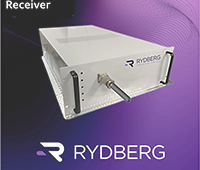TeraDiode’s laser can be used in metal cutting, welding, and other industrial/manufacturing settings. |
A small company in Massachusetts has built what they believe is the most
powerful direct-diode laser in the world. Their technology, developed at
MIT, employs an optical system to couple multiple individual
semiconductor laser beams into a single stronger one that rates at 1,000
W in a 200-?m fiber.
Direct-diode
lasers are efficient, reliable, compact, and relatively low-cost, and
are used extensively in the telecommunications and data storage
industries. However, their low brightness because of power and beam
quality limitations have limited them to only a few applications in
industrial settings.
Attempts
to improve these qualities of direct-diode lasers have resultant in
various schemes to combine separate beamlines into a single, stronger
pulse. TeraDiode’s technology, wavelength beam combining, uses an
evolution of previous approaches. The breakthrough may allow
semiconductor lasers to break into new industrial and military defense
applications.
Bob Yirka of Physorg.com reports on the technology:
Company
CEO David Sossen says that the new laser breaks through the limiting
factors that have held back the use of truly powerful lasers in all but
manufacturing pursuits; namely, the inefficiencies and huge power
appetites normally associated with powerful lasers, and can “output
between several hundred and several thousand watts, and in principle up to 100 kW,” all in a package that is smaller than other laser systems currently available.
The
company makes clear it sees its new technology as not just a new tool
for manufacturing, but as a future weapon that could be placed aboard a
tank or ship in perhaps as few as five years. In the meantime, the
company says it will be focusing on testing the new technology to see if
it might be used in missile defense, such as connecting it to the back
of a fighter plane to stymie the technology in heat-seeking weapons
currently used in anti-aircraft missiles, or better yet, to simply
destroy them.
An excerpt of Gregory T. Huang’s (Xconomy) more extensive report:
Lasers
have been used in industrial applications for some 40 years. And the
U.S. military has used lasers for decades, but in limited ways, because
the devices tend to be bulky, inefficient (not enough power output), and
prone to breakdown. To create a “directed energy weapon,” for example, a
conventional chemical-based laser would need to be about the size of a
building.
Until
now, the limiting factors for laser diodes have been power output and
beam quality. “We’ve broken through that barrier,” Sossen says, adding
that his company’s relatively compact lasers (which for commercial uses
are a bit bigger than a breadbox but smaller than competing devices) can
output between several hundred and several thousand watts, and in
principle up to 100 kW (with a bigger laser)—enough power to do
some real damage. And at different wavelengths, depending on the
application.





